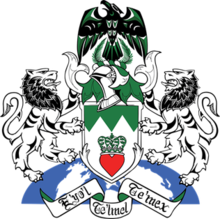
Simon Fraser University (SFU) is a public research university in British Columbia, Canada, with three campuses, all in Greater Vancouver: Burnaby, Surrey, and Vancouver. The 170-hectare (420-acre) main Burnaby campus on Burnaby Mountain, located 15 kilometres (9.3 mi) from downtown Vancouver, was established in 1965 and comprises more than 30,000 students and 160,000 alumni. The university was created in an effort to expand higher education across Canada.

The University of British Columbia (UBC) is a public research university with campuses near Vancouver and in Kelowna. Established in 1908, it is the oldest university in British Columbia. With an annual research budget of $759 million, UBC funds over 8,000 projects a year.
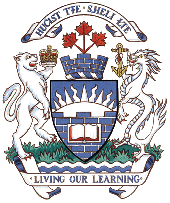
Royal Roads University is a public university with its main campus in Colwood, British Columbia. It is located at Hatley Park National Historic Site on Vancouver Island. Following the decommissioning of Royal Roads Military College in 1995, the government of British Columbia created Royal Roads University as a public university with an applied and professional degree-granting focus. The university considers alumni of RRMC to be part of its broader alumni community.

Vancouver Island University is a Canadian public university serving Vancouver Island and coastal British Columbia. Malaspina College began in 1969 and it has grown into a university which plays an important role in the educational, cultural, and economic life of the region. The main campus is located in Nanaimo; there are regional campuses in Duncan and Powell River as well as a centre in Parksville.

Trinity Western University (TWU) is a private Christian liberal arts university with campuses in both Langley and Richmond, British Columbia. The school is a member of Universities Canada.
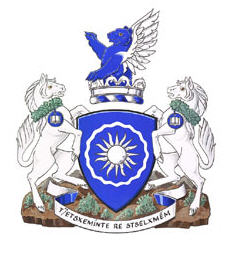
Thompson Rivers University is a public teaching and research university offering undergraduate and graduate degrees and vocational training. Its main campus is in Kamloops, British Columbia, Canada, and its name comes from the two rivers which converge in Kamloops, the North Thompson and South Thompson. The university has a satellite campus in Williams Lake, BC and a distance education division called TRU-Open Learning. It also has several international partnerships through its TRU World division. TRU is accredited by the Northwest Commission on Colleges and Universities (NWCCU) at the associate, baccalaureate and master's degree levels.
University Canada West (UCW) is a private, for-profit university in British Columbia, Canada. It was founded in 2005 by David F. Strong, the former president of the University of Victoria. UCW was purchased in 2008 by the Eminata Group and in 2014 sold to Global University Systems, its present owners. Based in downtown Vancouver, the university offers undergraduate and graduate programs in business and management.

Emily Carr University of Art + Design is a public art and design university located on Great Northern Way, in the False Creek Flats neighbourhood of Vancouver, British Columbia, Canada.

The University of the Fraser Valley (UFV), formerly known as University College of the Fraser Valley and Fraser Valley College, is a Canadian public university with campuses in Abbotsford, Chilliwack, Mission and Hope, British Columbia. Founded in 1974 as Fraser Valley College, it was a response to the need for expanded vocational training in the communities of the Fraser Valley. In 1988, it became a university college, with degree-granting status. As the University College of the Fraser Valley, it grew rapidly, becoming one of the largest university colleges in Canada.
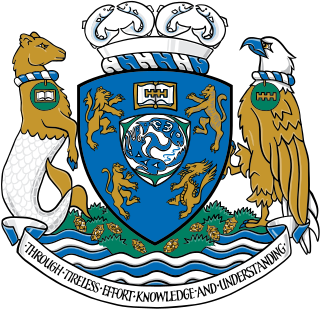
Kwantlen Polytechnic University (KPU) is a public degree-granting undergraduate polytechnic university in British Columbia, Canada, with campuses in Surrey, Richmond, Cloverdale, Whalley, and Langley. KPU is one of the largest institutions by enrolment in British Columbia garnering a total of 20,000 students and 1,400 faculty members across its five locations, encompassing the gestalt of the Metro Vancouver district. KPU provides undergraduate and vocational education including bachelor's degrees, associate degrees, diplomas, certificates, apprenticeships, and citations in more than 140 diverse programs.
Kwantlen may refer to one of the following:
Victoria College was an affiliated college based in Victoria, British Columbia, Canada. Founded in 1903, it was the first post-secondary institution established in British Columbia, and served as the predecessor to the University of Victoria. As a result, the history and traditions of the institution are perpetuated by the University of Victoria.
Coast Mountain College (CMTN) is an accredited, publicly funded post-secondary educational institution that serves the communities of British Columbia's northwest region. CMTN offers field schools, college access, trades, university credit, health and human services programs. The college is a member of the University of the Arctic network, and Colleges and Institutes Canada (CiCan).
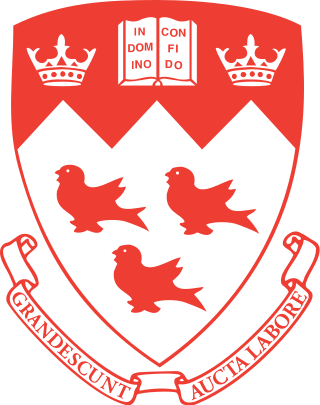
McGill University is an English-language public research university located in Montreal, Quebec, Canada. Founded in 1821 by royal charter, the university bears the name of James McGill, a Scottish merchant whose bequest in 1813 established the University of McGill College. In 1885, the name was officially changed to McGill University.

The College of New Caledonia (CNC) is a post-secondary educational institution that serves the residents of the Central Interior of British Columbia. This region has a population of about 145,000, and it encompasses three school districts: #28 (Quesnel), #57 (Prince George), and #91 (Nechako Lakes). CNC operates six campuses in Prince George, Burns Lake, Fort St. James, Mackenzie, Quesnel and Vanderhoof.
Bishop's College School or BCS is an English-language non-profit independent boarding prep school in Sherbrooke, Quebec, Canada for students in Grades 7 to 12. Founded in 1836, BCS is the fifth oldest private school in Canada. BCS has the highest endowment per student of any independent school in Canada. Seven BCS people have been named Rhodes Scholars. A royal charter was granted in 1853 from Queen Victoria for Bishop's College when BCS was the constituent junior division. The school was recognized as the "Eton of Canada" initially by the first Governor General of Canada, Lord Monck on a visit in 1864. It locates at the heart the historic Eastern Townships and near New England. The school is recognized as a Quebec cultural heritage site in the Répertoire du patrimoine culturel du Québec.
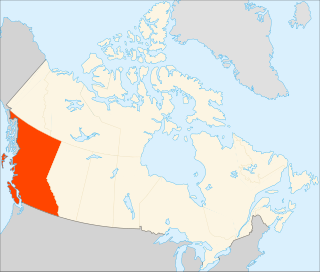
Higher education in British Columbia is delivered by 25 publicly funded institutions that are composed of eleven universities, eleven colleges, and three institutes. This is in addition to three private universities, five private colleges, and six theological colleges. There are also an extensive number of private career institutes and colleges. Over 297,000 students were enrolled in post-secondary institutions in British Columbia in the 2019-2020 academic year.

Toronto Metropolitan University is a public research university located in Toronto, Ontario, Canada. The university's core campus is situated within the Garden District, although it also operates facilities elsewhere in Toronto. The university operates seven academic divisions/faculties, the Faculty of Arts, the Faculty of Community Services, the Faculty of Engineering and Architectural Science, the Faculty of Science, The Creative School, the Lincoln Alexander School of Law, and the Ted Rogers School of Management. Many of these faculties are further organized into smaller departments and schools. The university also provides continuing education services through the G. Raymond Chang School of Continuing Education.
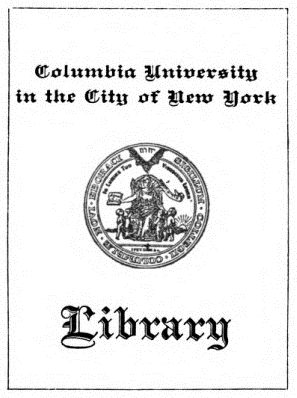
Columbia University represents itself using several symbols, including a university seal and a coat of arms. The seal was first adopted in 1755, shortly after the university's founding, and with few variations continues to be used today. The coat of arms was adopted by the university in 1949. Additionally, the individual schools of Columbia possess their own logos, most of which contain some variant of the King's Crown symbol. Exceptions to this rule include the College of Physicians and Surgeons, which in addition to a logo adopted a variant of the university seal, and the School of General Studies, which inaugurated its own coat of arms in 1950 based on the Columbia arms.
